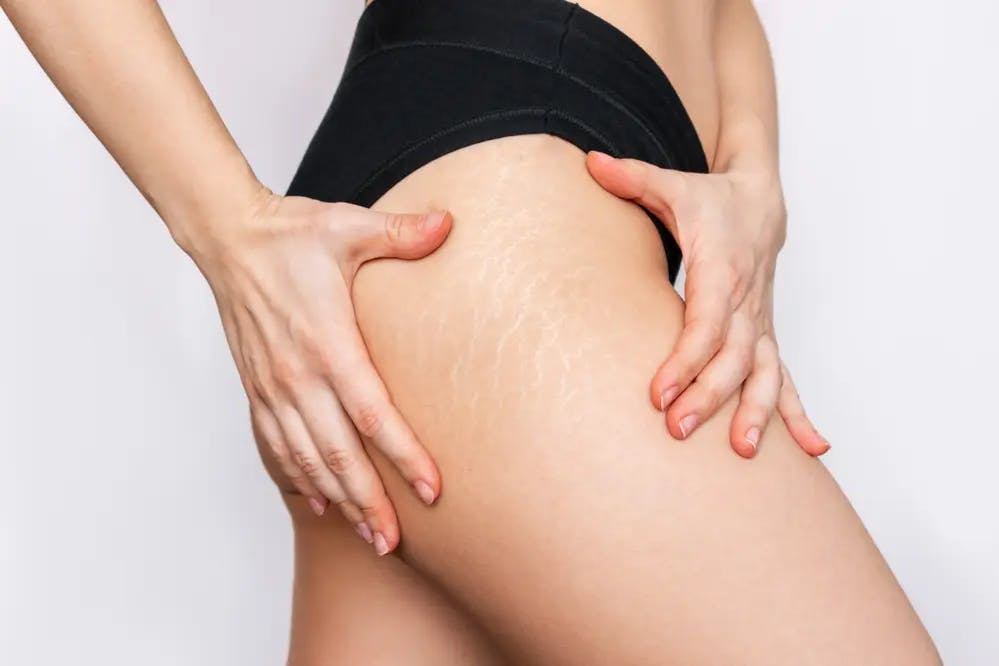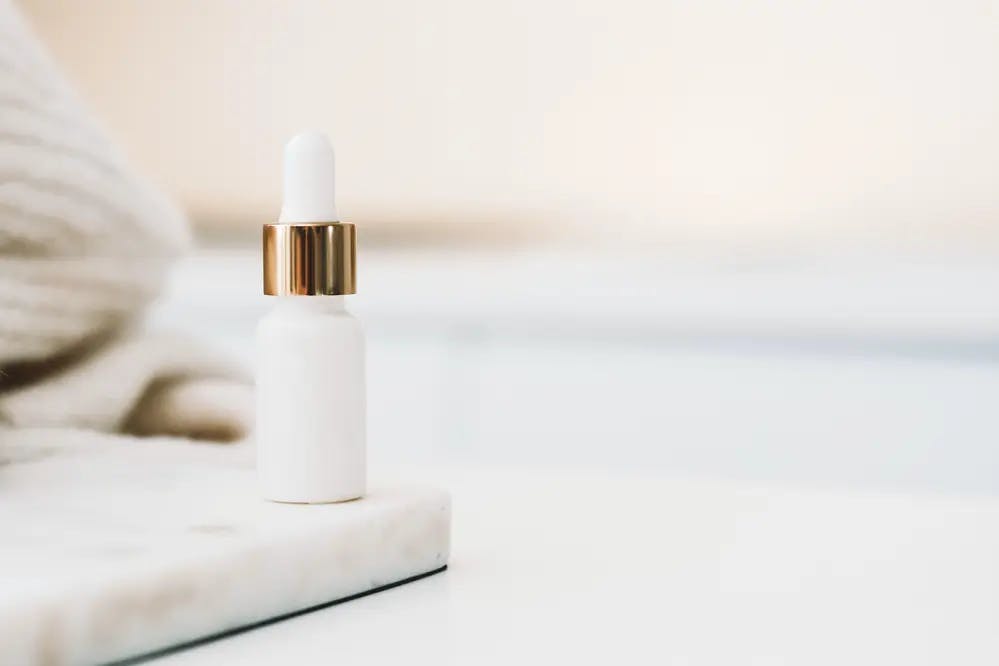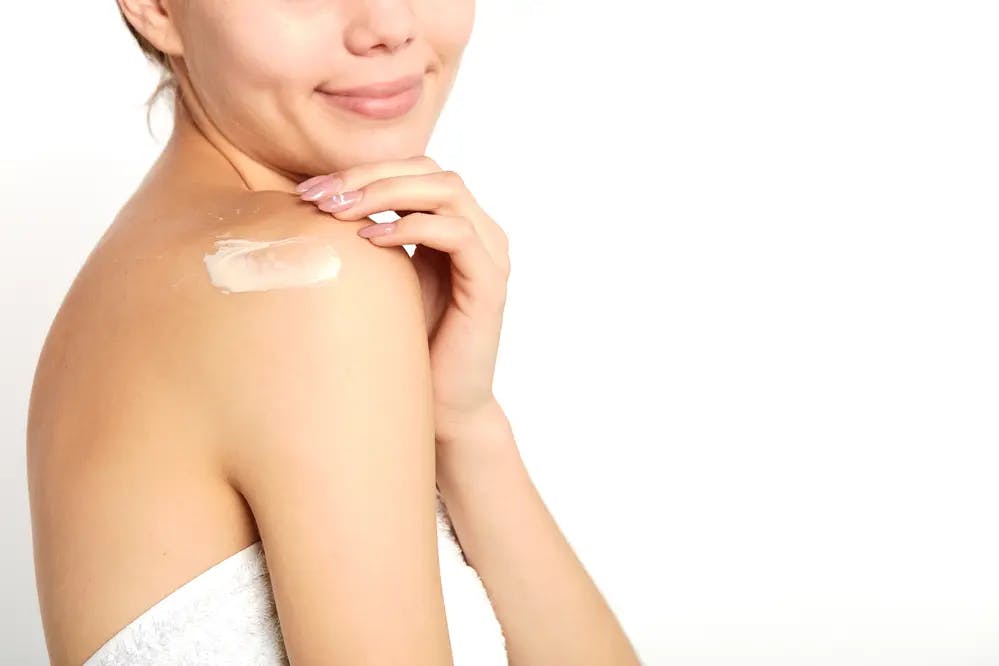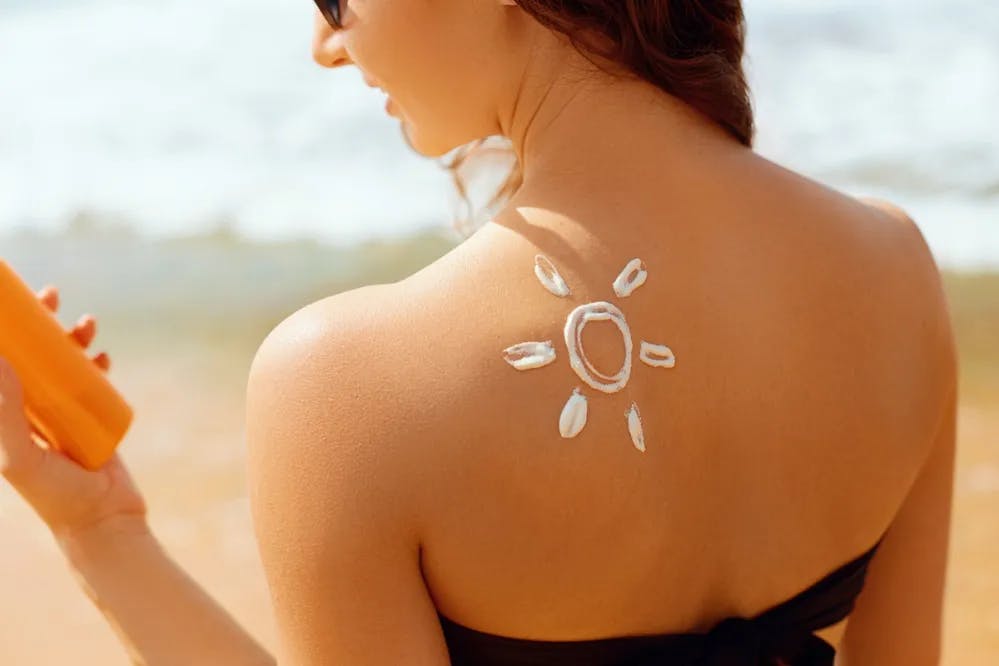Stretch Marks: What They Are and Why They Appear

Table of Contents:
- What Are Stretch Marks?
- What Causes Stretch Marks?
- Where Do Stretch Marks Appear on the Body?
- Symptoms of Stretch Marks
- How Do You Treat Stretch Marks?
- Do Stretch Marks Go Away on Their Own?
- How Do You Prevent Stretch Marks?
- Conclusion
Stretch marks are a type of skin scarring that happens when your skin is stretched or expands rapidly. These long, narrow streaks or lines are usually a different color or texture than the surrounding skin and appear on areas of the body where fat is stored, like your thighs, abdomen, or breasts.1 Stretch marks are very common; in fact, about 50% to 90% of women have them, and they are usual, too, in men and teens.
In this article, we will explain how stretch marks are formed and how you can prevent and treat them.
What Are Stretch Marks?
Stretch marks or scars appear as red, pink, darkened, or lightened patches, lines, or streaks. They can show up anywhere on the body, but they generally concentrate on the armpits, abdomen, breast area, thighs, and buttocks.1,2
Although stretch marks are not harmful or painful, they are visible signs of skin surface deformation and, as such, can be a cosmetic concern for many people.
What Causes Stretch Marks?
Stretch marks are caused by a stretching or rapid expansion of the skin. There are many factors that can contribute to this happening. For instance:
- Weight fluctuations: Rapid weight gain or loss can cause stretch marks to form. This happens when the body is changing and doesn’t have enough time to accommodate the new size.
- Pregnancy: Pregnancy is a common cause of stretch marks because the abdomen has to grow rapidly as the baby develops. Hormonal changes during pregnancy can also affect the skin's elasticity and make it more prone to stretch marks.
- Rapid growth: During periods of rapid growth, such as puberty, the body also undergoes significant changes that can extend the skin beyond its normal capacity and form stretch marks.
- Corticosteroids: Using corticosteroids for an extended period of time (for example, if you’re treating a skin condition or dealing with an autoimmune disorder), the medications can weaken your skin’s elasticity.
- Genetics: Lastly, some individuals are simply more predisposed to developing stretch marks because of genetics.
Where Do Stretch Marks Appear on the Body?
Stretch marks can appear on various areas of the body, but they tend to do so around areas that are subject to rapid expansion or stretching. The most common places where stretch marks occur include:
- Thighs: Stretch marks can develop on the inner and outer thighs - typically due to growth spurts and/or weight gain.
- Abdomen: These marks are also prone to appear on the stomach or abdomen, particularly during pregnancy.
- Breasts: Stretch marks and lines can develop on your breasts, especially during puberty or pregnancy (as they undergo changes in size).
- Shoulders and upper arms: if you’ve started an exercise routine to increase your arm or upper body mass, you might also develop stretch marks on your shoulders.
- Back: A common cause of stretch marks on your back is rapid weight or growth spurts.
- Hips and buttocks: Both of these areas are also prone to stretch marks, particularly if your weight fluctuates rapidly.
Symptoms of Stretch Marks
The symptoms of stretch marks include changes in appearance (such as reddish, pink, or purple streaks on the skin), texture (they might feel slightly raised, indented, or have a ridged texture), and location (they appear on areas of the body where there’s been rapid expansion).3
As we covered above, stretch marks can be caused by a variety of reasons. There are, however, a few risk factors that can be considered. For example, women are more prone to developing stretch marks than men (especially during pregnancy). If your close family members have experienced these, you might also have a higher risk of developing them too.
How Do You Treat Stretch Marks?
It’s important to note you cannot altogether remove stretch marks. However, there are some treatment options you can use to help improve their appearance. Let’s go through them in some more detail.
- Creams, lotions, and gels: There are various topical creams, lotions, and oils you can get over the counter or by prescription. These products usually contain an ingredient called retinol, as well as hyaluronic acid, vitamin E, and/or collagen, and can help keep your skin moisturized. Over time, they can also reduce the appearance of stretch marks. Tretinoin can also increase collagen production and promote skin cell turnover.
- Self-tanner: Applying a self-tanning lotion (or spraying the skin) can help conceal stretch marks as they provide a more even skin tone. However, they do not treat the issue itself.
- Home remedies: Some home remedies, such as applying natural substances like aloe vera, cocoa butter, or olive oil, can reduce the appearance of stretch marks. Their effectiveness, though, varies among individuals.
Do Stretch Marks Go Away on Their Own?
Stretch marks do not typically go away entirely on their own, but they may fade and become less noticeable over time.
For example, stretch marks usually appear as reddish, pink, or purple streaks on the skin. As time passes, however, they often lighten in color and become white or silvery. This natural healing process makes the marks less visible, although there are additional factors that can influence these changes, such as skin type and treatments.
How Do You Prevent Stretch Marks?
It’s not possible to completely prevent stretch marks, but here are some helpful steps you can take to reduce the likelihood of them appearing (and improve the way they look if they do):4,5
- Maintain a healthy weight: Avoiding rapid weight gain or loss can reduce the risk of developing stretch marks. It’s better to instead aim for a gradual and steady weight change that allows your skin to adjust.
- Stay hydrated: Make sure you drink plenty of water to keep your skin hydrated and improve its elasticity. Well-hydrated skin may be more resistant to stretch marks.
- Eat a balanced diet: If your diet is rich in vitamins and minerals (particularly those promoting skin health), you will be supporting the elasticity and strength of your skin.
- Exercise: Regular physical activity helps to keep your skin healthy and maintain its elasticity. Strength training exercises that help to tone and firm the underlying muscles can also contribute to the overall appearance of your skin.
- Moisturize your skin: Applying a moisturizing cream or lotion to your skin can help to keep it supple and hydrated. Focus on areas prone to stretch marks, such as the abdomen, hips, thighs, breasts, and buttocks.
- Avoid excessive sun exposure: Protect your skin from excessive sun exposure, as ultraviolet (UV) rays can damage the collagen and elastin fibers in the skin and make your stretch marks more visible.
- Pregnancy care: During pregnancy, apply moisturizing creams or oils specifically formulated to help keep the skin hydrated and minimize stretch marks.
Conclusion
Stretch marks (or striae) are a common type of skin scarring that occurs when your skin stretches or expands rapidly. Weight fluctuations, rapid growth, pregnancy, some medications, and genetics can all play a role in developing them.
Although there is no cure that can make stretch marks disappear, there are plenty of products that can help improve your skin’s appearance. For instance, topical creams and lotions with retinol, hyaluronic acid, vitamin E, and collagen, as well as a few at-home remedies.
If you’re worried about your stretch marks, consider consulting with a dermatologist or healthcare professional for personalized advice and treatment options based on their severity and specific characteristics.
If you like discussing all about skin, join us at Breakout!
References:
- Singh, G.; Kumar, L. P., Striae . Indian journal of dermatology, venereology and leprology 2005, 71, 370.
- Lokhande, A. J.; Mysore, V., Striae distensae treatment review and update. Indian dermatology online journal 2019, 10 (4), 380.
- Kasielska-Trojan, A.; Sobczak, M.; Antoszewski, B., Risk factors of striae gravidarum. Inter. J. of Cosmet. Sci 2015, 37 (2), 236-240.
- Elsaie, M. L.; Baumann, L. S.; Elsaaiee, L. T., Striae distensae (stretch marks) and different modalities of therapy: an update. Dermatologic Surgery 2009, 35 (4), 563-573.
- Ud‐Din, S.; McGeorge, D.; Bayat, A., Topical management of striae distensae (stretch marks): prevention and therapy of striae rubrae and albae. Journal of the European academy of dermatology and venereology 2016, 30 (2), 211-222.



